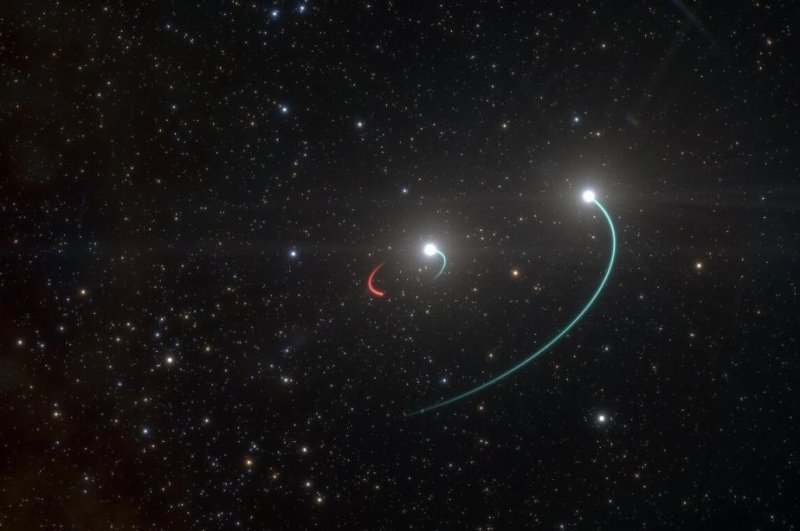An artistic rendering shows a star system centered around a totally invisible black hole. Photo by ESO
May 6 (UPI) -- Scientists have discovered the closest black hole to Earth, located just 1,000 light-years away.
Astronomers were able to pinpoint the black hole by tracking the trajectories of its two companion stars using a 2.2-meter telescope in Chile, managed by the European Southern Observatory and the Max Planck Institute for Astronomy.
"We were totally surprised when we realized that this is the first stellar system with a black hole that can be seen with the unaided eye," Petr Hadrava, an astronomer at the Academy of Sciences of the Czech Republic in Prague, said in a news release.
The newly discovered black hole is part of the star system that forms the constellation Telescopium. On a clear night in the Southern Hemisphere, the black hole's companion stars can be seen with the naked eye.
Scientists shared their discovery of Earth's matter-eating neighbor this week in the journal Astronomy and Astrophysics.
Astronomers set out to study the two Telescopium stars -- officially the HR 6819 system -- as part of a broader survey of binary star systems. The orbital pattern of the two stars revealed the presence of a third object, a black hole. Observations showed one of the two stars orbits the black hole once every 40 days, while the second star orbits the star-black hole pair at a large distance.
The stellar-mass black hole boasts a mass roughly four times that of the sun. It isn't violent enough to affect the surrounding environment, and so it is truly black. Most of the two dozen or so black holes found inside the Milky Way strongly interact with the gas and dust that surround them.
"An invisible object with a mass at least 4 times that of the Sun can only be a black hole," said ESO scientist Thomas Rivinius, lead author of the new study.
The discovery of a quiet, totally invisible black hole so close to Earth suggests there are a massive population of black holes scattered throughout the galaxy and the cosmos.
"There must be hundreds of millions of black holes out there, but we know about only very few. Knowing what to look for should put us in a better position to find them," said Rivinius.















